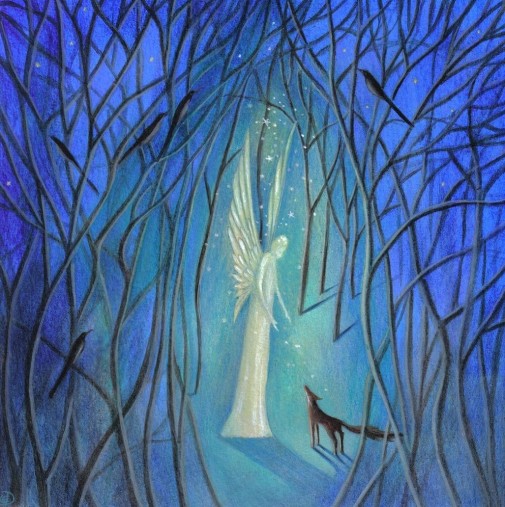“Why do things die, mama?â€
My child and I had walked and talked for about ten minutes after finding a young fox dead on the roadside before she asked this question.
We were on a nature walk, an “adventure†and I gasped when I saw it lying there, all soft chestnut fire glory against hard grey tarmac and sharp curb.
So extraordinarily beautiful. So young, only just an adult, smooth, soft, mange-free fur and white teeth, brand new. Still warm, but dead.
Cars whizzed past, fast. I picked the fox up, its head flopped and I cradled it, blood dripping a little from its mouth.
I carried it and laid it reverently in some bough-heavy bushes, curled it around nose-to-tail as though it was sleeping, closed its eyes.
My daughter wanted to touch it too. I was proud of her. We stroked it. Her emphasis was on its wild eyes. Mine was on its youth and splendor.
We talked about it being an instant, painless death, that looking at the road, the driver couldn’t have stopped in time. We noticed the globy blood splatters. My girl asked would the fox’s parents be looking for it?
I began to cry, just a little. I was thinking of the utter, desolate waste. The youth and vitality, the care the fox’s parents would have taken to protect, feed and teach this little one through cold Spring and wet days and nights of scarce pickings. And now too quick across the road and gone.
My quiet tears as we walked were not just for this young, healthy, fit fox. They were for my own death kisses: my dogs, my cats, my mother, my self, my best friends, a boy I found dead in his car, who had fed a hose from his exhaust pipe in a lonely place . Suicides, bizarre accidents, fatal medical mistakes.
I don’t mind at all that my child sees my tiny tears or feels my sadness. I think of other children who are not given opportunities to see and feel raw, wild life and learn about death gently at first through the natural world. Who do not go on nature walks. Death on a nature walk, what could be more natural?
We have ten minutes of discussing the fox, sudden death and the consequences for everyone involved, my child asking me all kinds of questions.
And then she asks me, as she has asked me several times before, “why do things die, mama?†And I say, without hesitation, “because without death there is no lifeâ€.
I use my quaint, simplistic theory of opposites to explain things a lot. Without darkness light doesn’t exist. And yet, when we happen upon death suddenly and unexpectedly as grown-ups we are thrown out of our complacency. Children accept.
I feel odd writing about our young fox – and this is a documented syndrome you know, that when you happen upon a dead body you feel a primal sense of needing to protect it, an askew sense of it being your responsibility – I think of him still curled up and getting wet in the rain, I wonder should I have carried him all the way home and buried him here though that didn’t feel at all right at the time. I feel a little dishonorable documenting our experience in a blog post.
All of this is perhaps less about the natural, wild fox still in his natural element in the bushes and more about the wondering over death his has stirred up in me.
Yet, I want to say that I am glad we came upon the fox when we did, that it was us and not some other, stray dogs even.
I am grateful that the fox in his death gave several gifts to my child: a chance to touch wild, to stare at stillness, to learn about death in all of its complexity, to honor the found dead, respect and revere them – and more, that crossing roads is a dangerous thing, impulse must sometimes be tempered, consequences of decisions can be catastrophic …
I see her beautiful mind absorbing all of this. And she does not cry. As with so many other things, she understands it all far better than I.
Image “An Angel in the Woods” borrowed from artist Karen Davis. Check out her Etsy shop, Moonlight and Hares + follow her on Twitter @moonhare Thank you Karen for making our world more beautiful.
